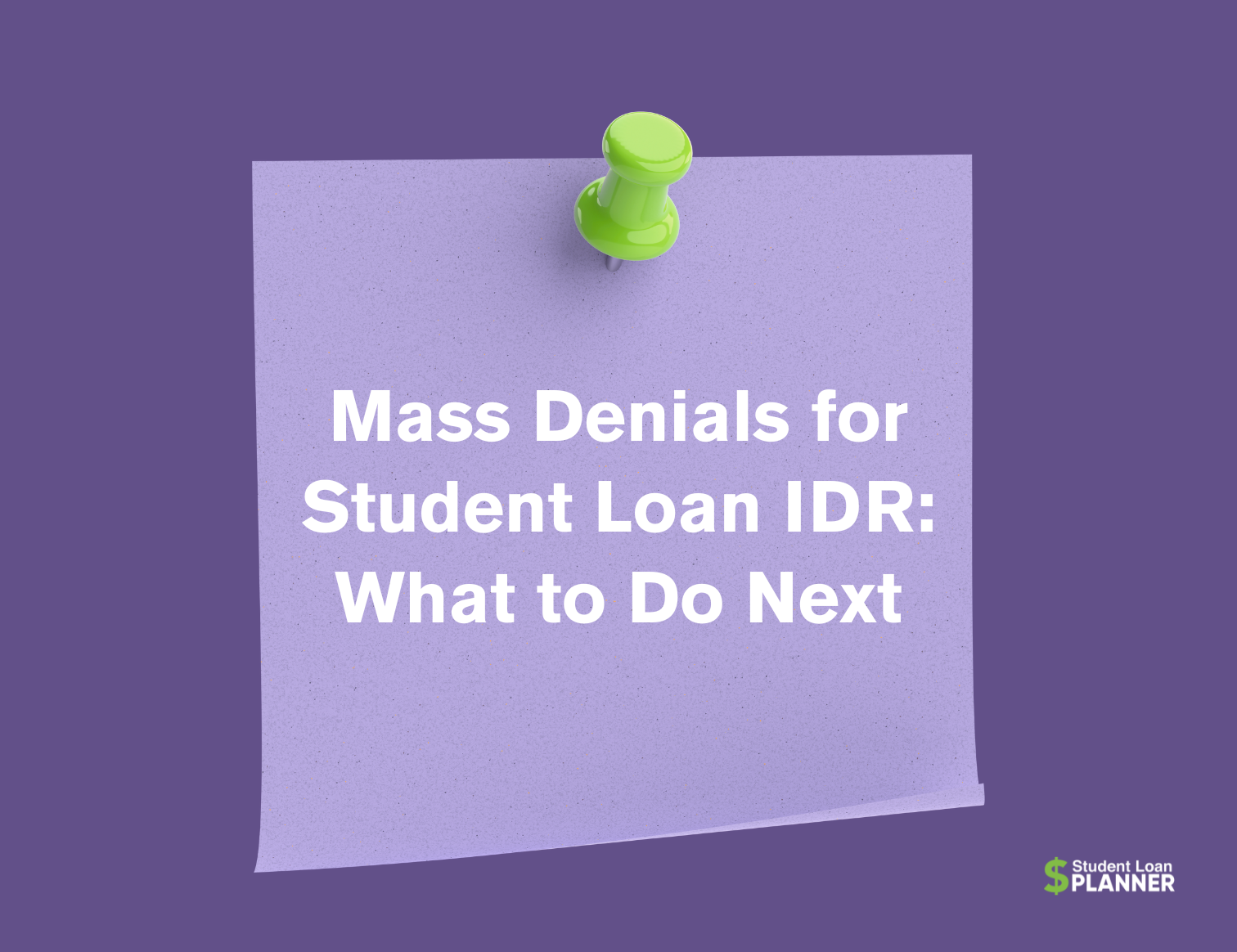
Nearly 500K Student Loan IDR Applications Denied: What to Do Next
The Department of Education is set to deny the applications of nearly half a million federal student loan borrowers who had applied for income-driven repayment (IDR), according to recent reporting.The cohort of applications represents approximately one-third of the 1.5 million IDR applications that are currently sitting in the department’s backlog.The news is just the latest setback for hundreds of thousands of borrowers who have been desperately seeking to lower their payments through IDR plans.As a result of court orders associated with ongoing legal challenges, legislation passed by Congress, and policy decisions by the Trump administration, the entire IDR system has been plagued by turmoil and volatile changes for months.
And things will likely get worse before they start to get better.Here's what student loan borrowers should know about the incoming mass denials, and what can be done.Mass denials of IDR applications will hit thousands of student loan borrowers The mass IDR denials, first reported by POLITICO earlier this week, will impact approximately 460,000 federal student loan borrowers who made specific selections on their IDR applications last fall or earlier this year.Up until recently, the IDR application provided borrowers with five choices.
They could select one of the four available IDR plans — ICR, IBR, PAYE or SAVE.Or, they could select a fifth option that allows their student loan servicer to select for them based on the plan that offers the lowest possible monthly payment. But as a result of ongoing legal challenges and recent court decisions, the SAVE plan has been blocked since last summer and is no longer available.The Department of Education has been essentially sitting on the IDR applications for borrowers who had selected the SAVE plan but were unable to enroll due to the court’s injunction.But according to POLITICO, the department has now made a decision to simply deny these applications en masse, given that SAVE remains blocked and is unlikely to return at this point. In addition, the Department has also not processed applications for student loan borrowers who selected the option for their loan servicer to enroll them in the IDR plan with the lowest possible monthly payment.
For almost all borrowers, SAVE would have been the plan with the lowest monthly payment amount. But with SAVE remaining unavailable, loan servicers cannot enroll borrowers in that plan.Rather than place borrowers into the next-most-affordable IDR option (which for many would be PAYE or IBR), the department has made the decision to simply deny these applications, as well. “Loan servicers cannot process these applications as SAVE is no longer an option, as it is illegal,” a department spokesperson told POLITICO.What student loan borrowers impacted by mass denials should do Borrowers who selected the SAVE plan or the “lowest monthly payment” option on their IDR application will receive official denial notices in the coming weeks.They will then have to reapply for a different IDR plan.
Currently, the department is accepting applications for the ICR, IBR and PAYE plans. The good news is that borrowers who use the online IDR application system at StudentAid.gov and opt into the IRS data retrieval tool to import their income information from their last-filed tax return should be able to get placed on their selected repayment plan within a reasonable timeframe.That’s because the IRS data retrieval tool essentially operates as an automated pre-approval process for the IDR application, facilitating faster approvals.“Applying for an IDR Plan is quick and easy if borrowers provide consent for the Department to obtain their federal tax information directly from the Internal Revenue Service,” said the Department of Education in a statement earlier this month.“This allows the Department to process borrowers’ IDR applications faster and eliminates the need for borrowers to manually upload their income information. When borrowers allow the Department to access their federal tax information, annual recertification of borrowers’ IDR plans is automatic.” Related: How to Revoke Access for the IRS to Share Your Income for Student Loans However, the bad news is that many borrowers will have higher monthly payments under the other IDR plans.
In some cases, the difference in the monthly payment amount may be significant, particularly for borrowers who don’t qualify for the PAYE or “new” IBR plans (i.e., if they took out federal student loans prior to October 1, 2007, or July 1, 2014, respectively).And borrowers whose income is now higher than it was when they submitted their original IDR application may have even higher monthly payments, as their IDR payments may be calculated based on that higher income.Turmoil grips federal student loan repayment system The mass denial of IDR applications is just the latest issue to plague the federal student loan system, particularly for borrowers pursuing income-driven repayment and eventual student loan forgiveness.While the 1.5 million IDR application backlog will temporarily be reduced by the mass rejections, presumably, the backlog will quickly balloon again as many of these same borrowers impacted by the rejection just reapply. In addition, the department’s recent announcement that interest will begin accruing again in August for borrowers covered by the SAVE plan forbearance will likely compel many of the 7.7 million SAVE plan borrowers to apply to change to a different IDR plan — something the department is specifically encouraging.
“The Department urges all borrowers in the SAVE Plan to quickly transition to a legally compliant repayment plan – such as the Income-Based Repayment Plan,” said the department in a statement.This could potentially swell the IDR application backlog even further.Meanwhile, the Department of Education has seemingly paused student loan forgiveness under the IBR plan.IBR is the only IDR plan currently not covered by any court order, and student loan forgiveness remains unequivocally authorized under federal statutes governing the program. Nevertheless, the department has indicated in updated guidance on the IDR court challenges that student loan forgiveness under IBR will remain “paused” while “our systems are updated to accurately count months” toward the 20- or 25-year IBR term.
The department has provided no additional information, nor has it provided a timeline or assurances on when student loan forgiveness will resume under IBR.
To add to the chaos, under recent legislation passed by Congress and signed by President Trump on July 4th, the department may soon begin phasing out the ICR and PAYE plans (as well as SAVE).Borrowers will then have to choose between IBR or the Repayment Assistance Plan (RAP), a new IDR option created under the legislation that should become available in the coming months.While RAP may offer somewhat lower payments than IBR, as well as a principal and interest subsidy for borrowers whose payments aren’t covering interest accrual, RAP also requires being in repayment for 30 years before a borrower can qualify for student loan forgiveness.
Publisher: Source link





